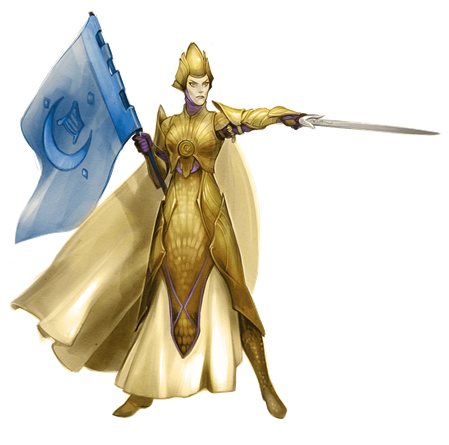 Class is back in session. This week, we draw our blades and practice our combat maneuvers alongside the most versatile of all fighters in the Player’s Handbook, the Battle Master! More than just warriors, Battle Masters are ardent students of tactics and the art of war. They meld their martial study and field training into a combat style that empowers their attacks, helps them maneuver their allies, and thwarts their opponents’ strategies.
Class is back in session. This week, we draw our blades and practice our combat maneuvers alongside the most versatile of all fighters in the Player’s Handbook, the Battle Master! More than just warriors, Battle Masters are ardent students of tactics and the art of war. They meld their martial study and field training into a combat style that empowers their attacks, helps them maneuver their allies, and thwarts their opponents’ strategies.
This wave of the Class 101 series will appraise every subclass within the Player’s Handbook and break down each subclass’s strengths, weaknesses, thematic elements, and everything else a player would want to know before playing that subclass. Because of this, you'll need to own the Player’s Handbook (or purchase the subclass a la carte on the Marketplace) in order to make full use of this series.
Check out the other guides in the Class 101 series, like the broad overview of the fighter class in Fighter 101: A Beginner’s Guide to Heroic Combat, and Fighter 101: Champion. If you’re interested in playing other classes, check out the entire Class 101 series.
Story of the Battle Master
“You’re looking for an opening,” said the black knight. Dressed in jet-black armor with a horned, skull-faced helm and wielding a gleaming steel sword, she looked like a demon made flesh. A crimson cape fluttered around her in the wind like a pair of bloodstained wings. Her opponent, a young warrior dressed in blue, stood his ground, his spear in a defensive posture. “I see your eyes, how furtively they move. Your face… so full of fear. It betrays to me every move you will make.”
Her opponent, goaded by her words, roared in anger and charged towards her with his spear leveled at her throat. His azure cloak billowed out behind him as he charged, but the black knight merely smiled behind her all-concealing helmet. She casually flicked his spear point away with her blade, and pummeled her charging foe in the stomach with a mailed fist. He gasped and doubled over, but his foe wasn’t finished. She lowered her armored frame and swung her sword into the back of his knees with staggering force. The blade dug into his chainmail, leaving an ugly bruise and bringing the already kneeling fighter to a prostrate pose of submission.
He snarled through tears and struggled to find the strength to rise, digging his trembling fingers into the mud in a vain attempt to support his own weight. The black knight stamped on his hand with the heel of her armored boot and loomed over him, appearing to be nothing less than Death itself. She raised her sword with religious reverence, point down, aimed at his throat. Her skeletal helmet grinned down at him.
“Fear not, young swordsman,” she rasped. “Your shame will be short-lived.”
Battle Master Features
A Battle Master fighter has learned a suite of tactical combat maneuvers through extensive study and training. The fighter gains access to five subclass features at 3rd, 7th, 10th, 15th, and 18th level. You can read all of the Battle Master features in the Player’s Handbook. In summary, your subclass features allow you to:
- Perform a number of combat maneuvers.
- Gain proficiency in artisan’s tools.
- Learn about your enemy’s abilities through careful observation.
- Improve the power of your maneuvers.
- Perform maneuvers more frequently.
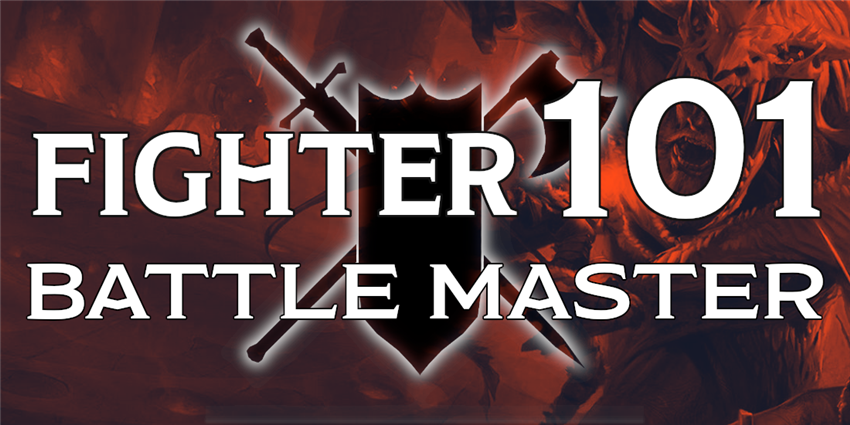
Benefits of the Battle Master Archetype
The Battle Master is one of the most versatile fighter archetypes in D&D. The Combat Superiority trait is the core of this subclass, granting the fighter the ability to use maneuvers to do everything from command allies to attack off-turn, to disarming foes, to using evasive footwork when crossing the battlefield, to intimidating foes with a single strike—and much more. This versatility lets the Battle Master shine in a lot of diverse situations, especially when compared to the Champion fighter.
One of the greatest advantages the Battle Master has over classes that mix magic and melee, like rangers, paladins, and Eldritch Knight fighters, is their ability to apply a maneuver to every single attack they make in a turn, if they don’t mind blowing half of their Superiority Dice in one turn. A paladin only has one bonus action per turn with which to cast wrathful smite, or a ranger only has one bonus action to cast ensnaring strike. (A paladin can use Divine Smite on every single attack, however, giving it significantly higher nova potential than a Battle Master in the short term .)
In short, a Battle Master's “nova” potential—that is, the potential to spike in power by spending a massive amount of resources at once—is fairly high. This is especially true if you’re able to take a short rest in between every single encounter, or at least between every other encounter. Since you recover your maneuvers on a short rest, compared to spell-using warriors that recover their spells on a long rest, you're able to fight all day long... assuming you have time to catch your breath in between every fight. Using maneuvers is the best part of playing a Battle Master, and getting into situations where you can use a lot of maneuvers is just pure fun.
Drawbacks of the Battle Master Archetype
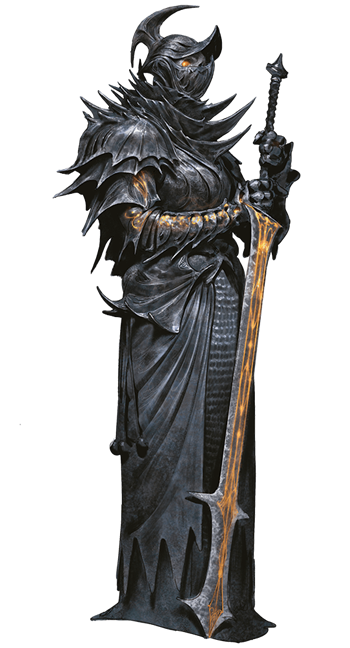 Maneuvers are a mixed bag. They're strong, but not very strong. Maneuvers are about as powerful as a 1st-level spell, maybe a 2nd-level spell in the right circumstances. Having a handful of 1st-level spells that you can replenish every time you take a short rest is undeniably powerful, but they nevertheless feel like they should be more, somehow. It feels like you should gain access to increasingly powerful maneuvers as you level up, just like a paladin gains access to increasingly powerful spells. The Eldritch Knight fighter archetype, for example, gains access to 1st, 2nd, 3rd, and 4th level spells over the course of their class progression. And though the Battle Master gains more uses of maneuvers, a broader selection of maneuvers, and a slight increase in power to their maneuvers as they level up, these changes feel minor at best.
Maneuvers are a mixed bag. They're strong, but not very strong. Maneuvers are about as powerful as a 1st-level spell, maybe a 2nd-level spell in the right circumstances. Having a handful of 1st-level spells that you can replenish every time you take a short rest is undeniably powerful, but they nevertheless feel like they should be more, somehow. It feels like you should gain access to increasingly powerful maneuvers as you level up, just like a paladin gains access to increasingly powerful spells. The Eldritch Knight fighter archetype, for example, gains access to 1st, 2nd, 3rd, and 4th level spells over the course of their class progression. And though the Battle Master gains more uses of maneuvers, a broader selection of maneuvers, and a slight increase in power to their maneuvers as they level up, these changes feel minor at best.
As stated above, Battle Master fighters can very easily “go nova,” spending all of their Superiority Dice in a turn or two. This is a solid strategy if the fighter knows they can take a break after a combat encounter, since they recover all of their Superiority Dice on a short or long rest. This is balanced by their maneuvers' relatively low power, but regaining them on a short rest means that they “can do this all day,” Captain America-style, whereas spellcasters need to more carefully ration their more potent magical resources. Nevertheless, the disparity in power between Battle Masters and spellcasting warriors becomes even more pronounced in games where the ability to keep fighting for encounter after encounter just isn’t important. If your DM typically only has one or two big combat encounters in a day, and you don’t even have the chance to take a short rest in between, the ability to recover your maneuvers doesn’t count for much. Ultimately, a high-level Battle Master would be forgiven for feeling disappointed by their incrementally improving maneuvers when compared to the large jumps in power granted by spells like destructive wave (available to paladins starting at 17th level) or even fireball (available to Eldritch Knight fighters starting at 13th level).
Suggested Build
Like most classes in D&D, the fighter doesn’t choose their subclass until 3rd level. If you’re playing a fighter from 1st level and think you want to become a Battle Master later, you should choose a race that improves your Constitution score and either your Strength or Dexterity. You can play a Battle Master as a heavily armored, greatsword-wielding tank, or as a lithe and nimble, dual-wielding duelist. If you want to play the former, some good races include half-orc, dragonborn, and mountain dwarf. To play the latter, races like halfling and elf will do the trick. Humans and half-elves are well-suited to just about any class, as well.
As usual, your character’s background is up to you. You can come up with all sorts of interesting stories and oddball characters by pairing unlikely backgrounds with the studious-yet-martial Battle Master fighter. Were you a scholar of tactics at a war college in Cormyr? Or were you a renowned mercenary Outlander known for developing a unique and supposedly unbeatable fighting style?
It’s a safe bet to choose EQUIPMENT when given the choice between GOLD or EQUIPMENT during character creation. The various types of equipment available to fighters easily suits either a Strength or Dexterity-focused playstyle. Choose chain mail and a martial weapon plus a shield if you want to focus on Strength, and choose leather armor, a longbow, and two martial weapons (like shortswords or scimitars) if you want to focus on Dexterity.
Maneuvers
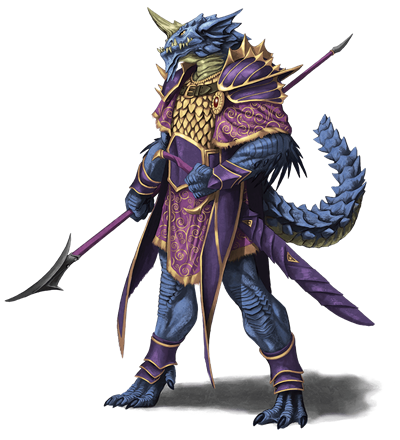 You gain access to the Combat Superiority feature when you choose this subclass at 3rd level. This lets you learn three maneuvers from the “Maneuvers” list as described in the Battle Master subclass. You will learn more maneuvers as you gain levels, but you’ll have to choose your favorite three for now. If you decide you don’t like a maneuver, you can trade one maneuver out whenever you learn new maneuvers. (You learn new maneuvers at 7th, 10th, and 15th level, but I would recommend that any DM allow a Battle Master fighter to retrain a maneuver whenever they gain a level. It’s just more fun, and it’s not a game-breaking increase in power.)
You gain access to the Combat Superiority feature when you choose this subclass at 3rd level. This lets you learn three maneuvers from the “Maneuvers” list as described in the Battle Master subclass. You will learn more maneuvers as you gain levels, but you’ll have to choose your favorite three for now. If you decide you don’t like a maneuver, you can trade one maneuver out whenever you learn new maneuvers. (You learn new maneuvers at 7th, 10th, and 15th level, but I would recommend that any DM allow a Battle Master fighter to retrain a maneuver whenever they gain a level. It’s just more fun, and it’s not a game-breaking increase in power.)
The maneuvers a Battle Master selects is a reflection of their own personality and combat style. Some maneuvers may be stronger than others in certain situations, but focus on the ones that suit your character best. Below are some archetypal “maneuver packages” that you can select to fit your character’s personality and fighting style.
The Fearless Leader. This kind of character commands and supports their allies from the front lines, using their booming voice and skill with battle tactics to achieve victory. This package is quite powerful if you have a rogue in your party, as it gives them more chances to use Sneak Attack for massive damage.
- Commander’s Strike
- Distracting Strike
- Rally
The Lithe Swordfighter. This kind of character whips around the battlefield, dodging blows left and right, and then hits their opponent with a devastating barrage of precise attacks. This package is excellent if you multiclass into rogue (Swashbuckler is a great subclass choice) or bard (College of Valor or College of Swords are both stellar).
- Feinting Attack
- Precision Attack
- Riposte
The Tower of Strength. This kind of character insists on being the shield and sword of their party. You protect others while dealing massive damage. Your responsibility is mighty, but the spotlight is oh so sweet. This package is well-suited to supporting parties that don’t have any other frontline characters.
- Goading Attack
- Menacing Attack
- Sweeping Attack
The Cheeky Duelist. This kind of character likes to mess with their foes, adding insult to injury with every blow. This package is most powerful if your DM likes to use extravagant terrain in their battles, like pits, water hazards, chasms, or lava. It’s also powerful in situations where simply incapacitating an enemy—not killing them—is the preferred method of victory.
- Disarming Attack
- Pushing Attack
- Trip Attack
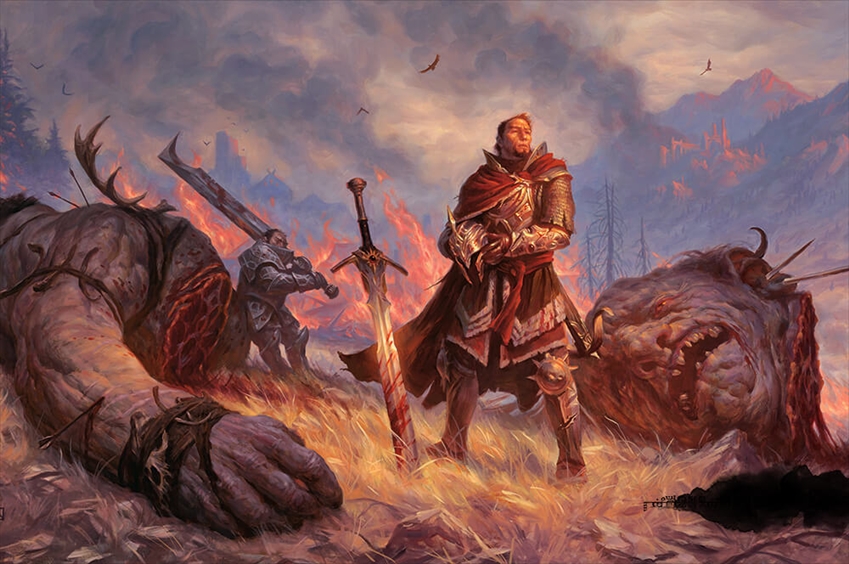
Feats
As a fighter, you gain two more Ability Score Increases than any other class in the game. (The extras come at 6th and 14th level.) This means that it’s incredibly easy for you to take one or even two feats while still maxing out your vital ability scores!
At 4th level, you get to gain either an Ability Score Increase or a feat. Choosing an Ability Score Increase lets you increase one ability score by +2 (such as increasing your Strength score from 16 to 18) or increase two ability scores by +1 (like increasing your Strength from 15 to 16 and your Constitution score from 13 to 14). Increasing your ability scores makes you better at a wide variety of things; for instance, increasing your Strength score makes it easier to hit with your weapon attacks, and it also makes it harder for enemies to resist your maneuvers, while also making you more likely to succeed on Strength saving throws and make successful Strength checks.
Feats, on the other hand, give you a special ability that could be more helpful in a specific circumstance, as opposed to the broad improvement that an Ability Score Increase could give you. Strength or Dexterity is your most important ability score, since it governs your ability to hit with attacks. Once you’ve increased your Strength or Dexterity score to 20 (its maximum value), or even just to 18 (a pretty good value), you may want to choose a feat. You can choose any feat you want to support your character concept, but there are some feats that may be more useful to your character than others.
Great Weapon Master. It practically goes without saying that Great Weapon Master is one of the best feats in the game. Choosing this feat will send your damage output into the stratosphere, especially paired with the Precision Attack maneuver.
Mobile. If you’re running around the battlefield, being able to move without fear of retaliation is a huge boon. The Evasive Footwork maneuver also helps, but this feat allows you to do so all the time, without spending one of your precious Superiority Dice.
Mounted Combatant. If you tend to ride into battle, this feat is an amazing boon. The free advantage on attack rolls against unmounted combatants is great, too. It has interesting synergy with the Maneuvering Attack maneuver, since it allows you to command your horse to move away from an enemy, even when it’s not your turn.
Polearm Master. Since you can use a maneuver on every single attack you make on a turn, gaining the ability to attack as a bonus action can be a huge benefit for Strength-focused Battle Master fighters.
Sentinel. This feat is just good for tanks, no matter what. Great if you’re playing a Strength-focused Battle Master.
If you want more advice for building a fighter, check out Fighter 101. Have you ever played a Battle Master fighter? What advice would you give to players that want to play this subclass?
 James Haeck is the lead writer for D&D Beyond, the co-author of Waterdeep: Dragon Heist, Baldur's Gate: Descent into Avernus, and the Critical Role Tal'Dorei Campaign Setting, a member of the Guild Adepts, and a freelance writer for Wizards of the Coast, the D&D Adventurers League, and other RPG companies. He lives in Seattle, Washington with his fiancée Hannah and their animal companions Mei and Marzipan. You can find him wasting time on Twitter at @jamesjhaeck.
James Haeck is the lead writer for D&D Beyond, the co-author of Waterdeep: Dragon Heist, Baldur's Gate: Descent into Avernus, and the Critical Role Tal'Dorei Campaign Setting, a member of the Guild Adepts, and a freelance writer for Wizards of the Coast, the D&D Adventurers League, and other RPG companies. He lives in Seattle, Washington with his fiancée Hannah and their animal companions Mei and Marzipan. You can find him wasting time on Twitter at @jamesjhaeck.








-
View User Profile
-
Send Message
Posted Oct 25, 2019I'm a little disappointed at the almost complete lack of mention of how powerful this archetype can be as an archer. Archery-based fighters in general get little attention or love, but an archery-focused Battle Master with maneuvers selected to allow them increased control of the battlefield can not only be a nightmare for their enemies, but an excellent way to pursue the common/popular Green Arrow-style 'trick shot master' archers. It's a great way to make your archer a much more interesting combatant and honestly one of the best uses of a Battle Master over the more typical melee-focused paladins and such.
-
View User Profile
-
Send Message
Posted Oct 25, 2019Three or four Sharpshooter arrows with Disarming Attack or Distracting Strike and suddenly the field looks a lot different. I am right there with you.
-
View User Profile
-
Send Message
Posted Oct 25, 2019So, so true. Crossbow expert + hand crossbow + menacing attack can basically put the battlefield on lockdown.
-
View User Profile
-
Send Message
Posted Oct 25, 2019I'm sorry if I'm actually wrong about it but shouldn't these articles be class 102? (Or maybe 202 because the original 101 was just class overviews? And 201 being the SRD subs) They're the second tier of classes after the free base subclasses.
-
View User Profile
-
Send Message
Posted Oct 25, 2019> in the fight circumstances
In the "right" circumstances?
>Having a handful of 1st-
There's 2 spaces here after "Having" ;)
-
View User Profile
-
Send Message
Posted Oct 25, 2019Honestly, this is the subclass that did everything right. Though I feel that all martial classes or just fighters, in general, should have access to maneuvers.
-
View User Profile
-
Send Message
Posted Oct 25, 2019Technically if you wanted an archer fighter I would choose the arcane archer fighter subclass, which is practically a battle master for archers.
-
View User Profile
-
Send Message
Posted Oct 25, 2019Sure. Except the Arcane Archer is bad and should feel bad :P It gets less than half the 'Arcane Shot' options that the Battle Master does maneuvers, it only ever gets two arcane shots a rest instead of the four to six maneuvers a Battle Master gets, and each arcane shot is less useful/powerful than a battlemaster maneuver. Not to mention the fact that a Battle Master can still use their maneuvers with their backup shortswords or scimitars, while an Arcane Archer pressed in close is SOL.
The Arcane Archer is a good idea that was horribly executed in 5e. It's more limited, less powerful, less versatile, and just less overall useful than a Battle Master. I have never created a character as an Arcane Archer that wasn't better as a Battle Master, nor have I ever created a character whose background and story insisted they be an Arcane Archer instead of a Fattlemaster.
-
View User Profile
-
Send Message
Posted Oct 25, 2019I also really like the RP image of this stalwart commander and strategist sitting back with a massive crossbow, yelling out commands and boosts to his troops. You're sitting back behind cover at great range, popping enemies with Goading Attack shots that give them disadvantage unless they attack a character they have 0 shot of reaching. You fire a bolt from your heavy crossbow, and your level 5 multiattack lets you call out a Commander's Strike for your rogue to get another free sneak attack in while you reload. Your bolts use Pushing Attack to shove enemies away from your squishy mages even as they try to run up. I still play a melee battle master, but only because my party didn't have a great front line. The ranged commander figure is extremely cool though, and from a metagame perspective, I get so much enjoyment from watching my rogue ally get that extra chance to nuke someone.
-
View User Profile
-
Send Message
Posted Oct 25, 2019Missing a space here.
I think it's worth noting in this comparison that paladins also have substantial nova damage, not because of spells, but because they too can burn their resource (spell slots) multiple times in the same round, once for each attack.
-
View User Profile
-
Send Message
Posted Oct 25, 2019Any one else think there should of been a mention of the MarialvAdept feat. Just saying that's two extra maneuvers and I'm pretty sure an extra superiority dice. Kind of makes this subclass insane.
-
View User Profile
-
Send Message
Posted Oct 26, 2019There's a mistake here: like the broad overview of the druid class in Fighter 101: A Beginner’s Guide to Heroic Combat, and Fighter 101: Champion.
Should be: like the broad overview of the fighter class in Fighter 101: A Beginner’s Guide to Heroic Combat, and Fighter 101: Champion.
-
View User Profile
-
Send Message
Posted Oct 26, 2019You said a broad over view of the "druid class" near the beginning, but otherwise great article!
-
View User Profile
-
Send Message
Posted Oct 26, 2019But every class CAN have maneuvers. One only has to be willing to spend a feat for it, which I think is a fair bargain.
-
View User Profile
-
Send Message
Posted Oct 26, 2019I completely agree. Not mentioning Martial Adept was a weird choice. Even with a smaller Superiority die, it expands the character's combat options and uses/rest.
-
View User Profile
-
Send Message
Posted Oct 26, 2019I have oodles of fun as a dex based halfling BM with the mobile rest. Giving our rogue an extra sneak attack with commander's strike, or using maneuvering or pushing attack to control the battle field and protect our glass cannons has been indispensable.
-
View User Profile
-
Send Message
Posted Oct 26, 2019"Is bad and should feel bad" Legit every character I have made or DMed for. Also, never EVER give new players the option of dragonborn, or you will end up with "Is bad and should feel bad" embodied as a party.
-
View User Profile
-
Send Message
Posted Oct 26, 2019Dragonborn Arcane Archer if you want people to just straight feel sorry for you, lol.
-
View User Profile
-
Send Message
Posted Oct 26, 2019I genuinely have a Robin Hood inspired character (which is part of the Green Arrow inspiration) that is a Battlemaster Archer ready to play. Considering how well I rolled her stats, she has the ability to just snipe everyone with Precision Attack + Sharpshooter.
-
View User Profile
-
Send Message
Posted Oct 26, 2019I dunno. It makes a good multi-class option. I've made an Aarakocra arcane archer + Way of the sunsoul monk. It's pretty fun to obliterate enemies from so far, but not be completely useless in melee.